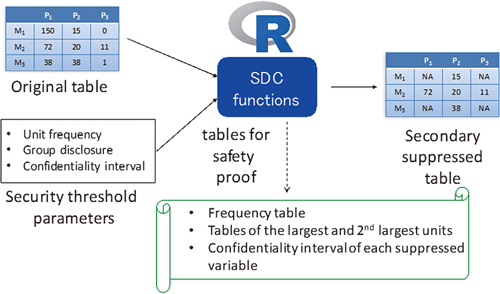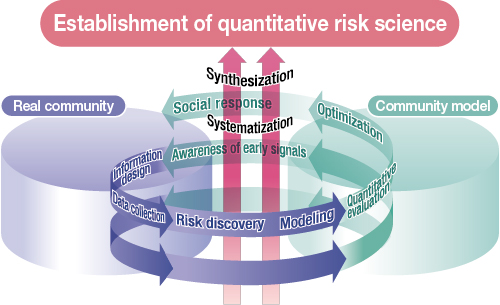
● Statistical disclosure control
● Security management for receipt data
● Quality management for statistics and microdata
● System science for risk information dissemination
■ Facilitate secondary use of official microdata
 Facility on-site at the Institute of Statistical Mathematics
Facility on-site at the Institute of Statistical MathematicsWe have been supporting government services to enable the secondary use of official microdata, such as the publication of anonymized statistical data under a 2010 partnership agreement with the National Statistics Center and the Research Organization of Information and Systems (ROIS). We also launched an on-site remote microdata access service in 2017 where researchers can access microdata, including that of nine other Asian countries, in a physically secure environment.
■ Protect sensitive information in microdata
 Statistical disclosure control tool for tabular data in R
Statistical disclosure control tool for tabular data in R
Tabular data, such as magnitude tables, are bases for the analysis of categorical data. However, there exist significant risks of revealing sensitive information in microdata through table cell values. Unfortunately, suppressing such sensitive cells is not sufficient since, in terms of marginal sums, tabular data involves linear relationships among cell variables. To address this issue, we developed a statistical disclosure control tool in R to optimally perform additional secondary cell suppressions to minimize information loss in the table.
■ Establish a conceptual basis for risk science

Procedure for establishing quantitative risk science
We aim to define basic principles in mathematical statistics and risk information theory that are applicable to various research fields in the risk sciences such as quantitative risk science and risk information management, by collaborating with other institutes in the risk research network. We identify key concepts in risk science, such as individual, unified, potential, and mathematical risks, and define the corresponding research disciplines to cover the revelation, discovery, structural analysis, and crisis management of risks.
